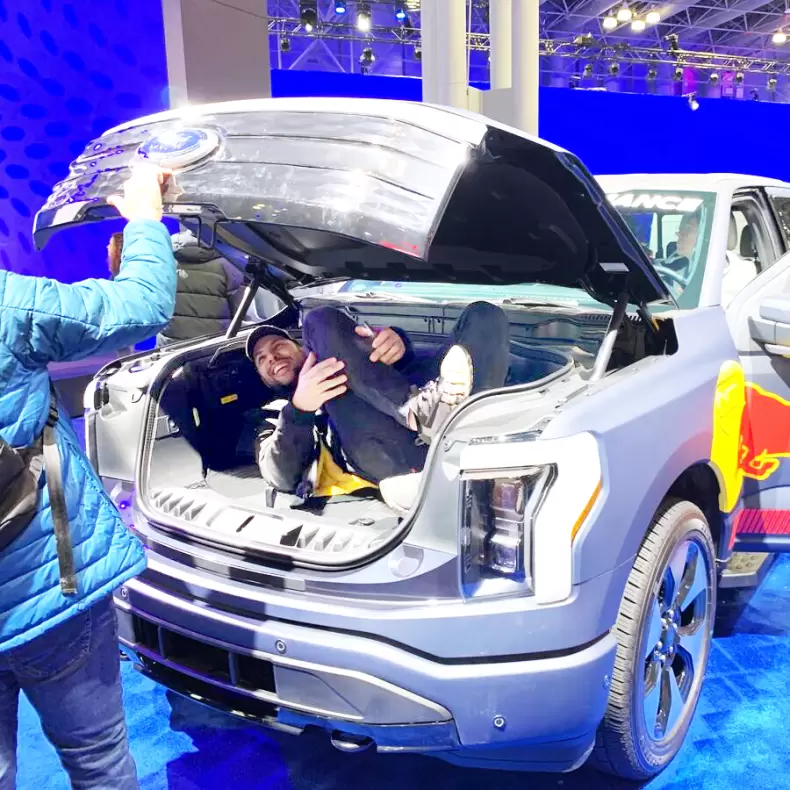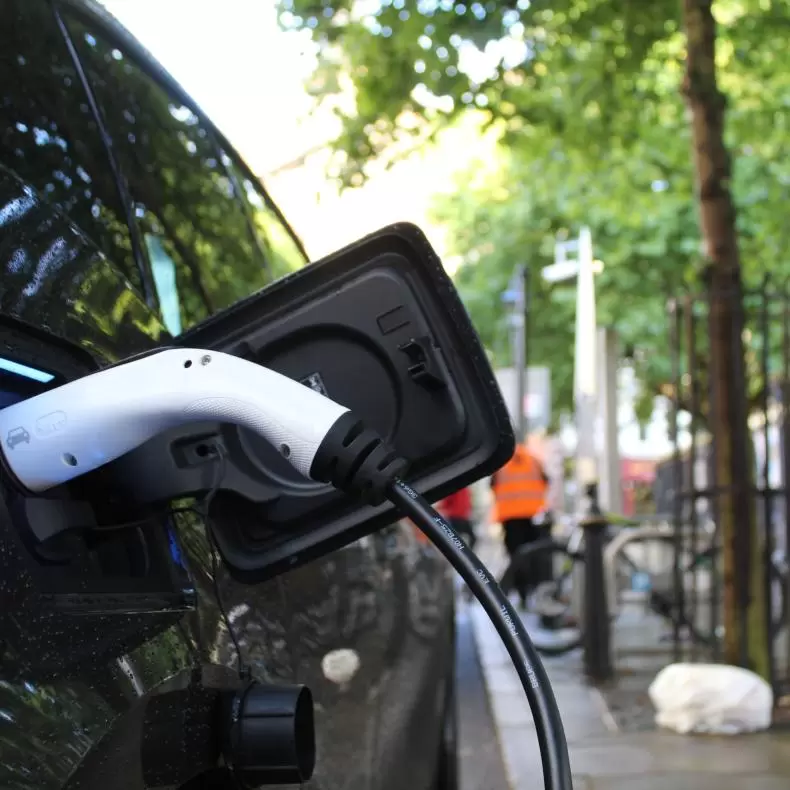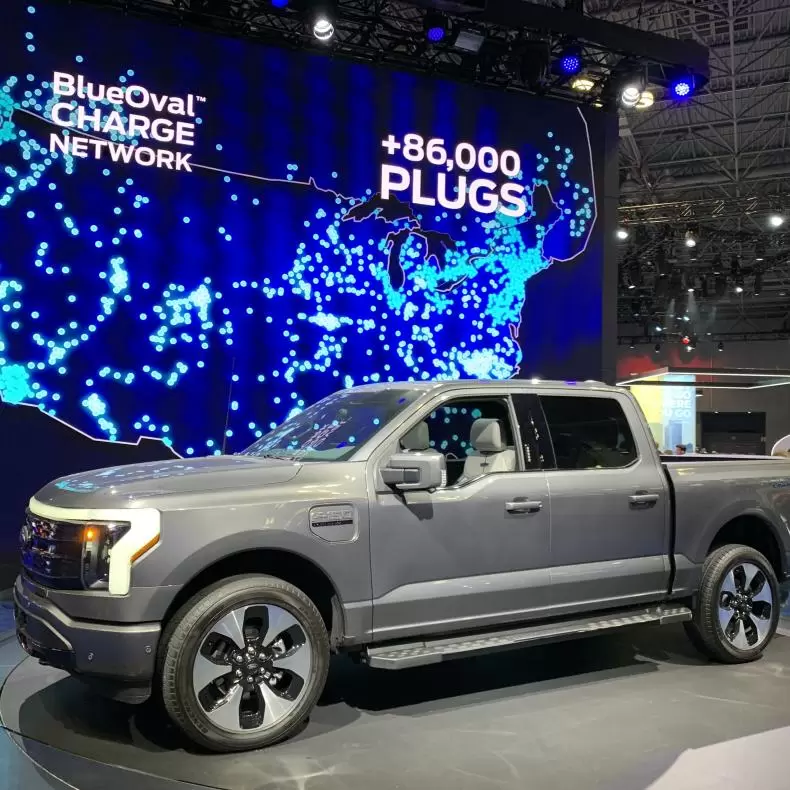Yes, electric vehicles are better for the environment — and answers to more questions about EVs

Would you consider yourself EV-curious? Turns out, you’re not the only one.
We canvassed visitors at the 2023 New York Auto Show to find out what car lovers wanted to know about electric cars.
They had plenty of enthusiasm for the EVs on display, and plenty of questions too — questions about costs, charging, environmental benefits and more.
Here are answers to some of the most frequently asked questions about electric vehicles.
How do electric vehicles help the environment?
– Hershy Katz, Brooklyn, NY

EVs help the environment because they produce much less air and climate pollution than vehicles that run on gasoline. This is true even though much of our electric grid is still powered by fossil fuels.
As our electric grid gets cleaner, with more renewable energy coming online, electric vehicles will get even cleaner too.
A gas vehicle will keep polluting as long as you drive it.
Concerns about mining the minerals we need for EV batteries are real, and they need to be addressed. (Drilling for oil, of course, has its own environmental downsides.) The upside for EVs is still tremendous — a medium-sized EV produces 60-68% fewer greenhouse gas emissions over its lifetime than a gas-powered car.
How far can an electric car drive on one charge?
— Diana McCall, Tampa, FL
These days, a new EV can get anywhere from 100 miles to more than 400 miles on a single charge, depending on the make and model.
Among model year 2023 EVs, at least 35 get more than 300 miles on a charge and seven top out at over 400 miles. Many of the most affordable EVs get more than 250 miles on a charge.
To find out a vehicle’s range, check out the U.S. Environmental Protection Agency’s official estimate. Just remember: as with EPA gas mileage estimates, performance may vary.
Are electric car prices going down?
— Caroline Bailey, Brooklyn, NY
EV prices have dropped considerably over the last several years, and evidence suggests that prices will continue to go down. In fact, in February alone, the average price of an EV dropped by more than $1,000.
Nowadays, the sticker price for at least three EVs is less than $30,000 and 10 models sell for less than the average cost of a new non-luxury car — $44,700. Plus, there are a host of federal, state and local incentives and rebates that can cut the cost of an EV by thousands of dollars. The full federal tax credit alone is up to $7,500, depending on the model and whether you buy or lease. This online resource from Consumer Reports can help you learn more.
How much does the cost of charging an electric car compare to the cost of gas?
— Vivian, Brooklyn, NY
Simply put, electricity is almost always cheaper than gasoline. In fact, one of the great selling points for EVs is that fueling them generally costs significantly less, even in areas where electricity prices are high. This calculator from the U.S. Department of Energy can help you understand the basics and compare fuel costs, vehicle to vehicle.
And be on the lookout for utility and other incentives that can reduce the cost of charging even further. Many utilities have lower rates for charging during non-peak hours.
What’s the difference between a regular hybrid and a plug-in hybrid?
— Octavian, Queens, NY

Hybrid cars run on batteries as well as gas engines. They transition seamlessly between both types of power, with no effort or attention required by the driver.
Most people are more familiar with gas-powered hybrids, which don’t need a plug to recharge. Instead, they capture some of the energy created during braking and store it as electricity in their batteries. That electricity reduces the need for gas, giving hybrids better mileage than most conventional cars. Some hybrids can even drive a few miles using their batteries alone.
Plug-in hybrids generally have bigger batteries that can go farther on electricity — 9 to 51 miles before switching to gas. Like gas-powered hybrids, they capture some energy while braking and store it in their batteries. But they get most of their electricity by plugging into a wall socket or EV charger.
While plug-in hybrid batteries don’t store as much juice as all-electric car batteries, the battery range is often enough to cover many people’s daily, local driving, meaning they only need to use the gas engine for longer trips.
How can I find public charging stations for electric vehicles?
— Multiple people
Phone apps are usually the way to go. These include PlugShare, Google Maps and Apple Maps, ChargeHub and the apps put out by various charging companies. Some of these apps, like Apple Maps, can even plan your route so you’ll have lots of available charging options.
Apps tell you both the location and the type of charger available, but not always if a particular charger is being used by another driver, or if the charger is not working. (New federal standards are designed to improve both reliability and access to information about specific chargers.)
And charger access is improving. Charging networks and retailers like Walmart, Taco Bell and Subway have plans to install tens of thousands of new chargers in the next few years and the federal government will build 500,000 charging stations with funding from the Bipartisan Infrastructure Law passed in 2021. That effort includes $2.5 billion to expand access to public EV chargers in underserved urban and rural communities.
How long does it take to charge an electric car?
— Malkie, Monsey, NY
That depends on the kind of charger you’re using.
A level 1, or trickle charger, is just a regular wall outlet — the kind of socket you’d plug a lamp or your phone into. All EVs come with a special cord that allows you to plug your car into a wall socket and get 2 to 5 miles’-worth of charging an hour. This works great if you’re charging your car at home overnight.

Since most people in the U.S. drive fewer than 40 miles a day, you can probably cover your daily commute and errands using a trickle charger.
Level 2 chargers provide up to about 25 miles’-worth of juice per hour. Most public chargers are level 2.
If you want to install a level 2 charger at home, it needs to be connected to a 240-volt outlet, the kind you might plug a clothes dryer into. You may already have one that’s accessible, but most level 2 charger installations require a qualified electrician. And, to further ensure safety — 240 volts is a lot of juice — make sure the charger is UL listed.
Level 2 chargers cost roughly $200 to $1,000 without installation, but rebates, tax credits and incentives can save as much as $1,000 in some states and utility districts.
Level 3, aka superchargers, are super fast. They can charge an EV’s battery to 80% full within an hour and many can deliver a 50% charge within 15 minutes. Tesla, Electrify America, EVgo and ChargePoint all offer level 3 chargers, as do some government agencies in New York, Vermont, California and other states.
Are electric vehicle batteries recyclable?
— Ian Mirthes, New Jersey
Good news here: There are impressive options for reusing and recycling EV batteries. Already, some companies are using spent EV batteries that can still hold some charge to store electricity generated by solar panels.
Likewise, as much as 95% of an EV battery can be recycled — making the critical minerals they contain ready for use in batteries again. There are some challenges involved. EV batteries aren’t as easy to recycle as, say, an aluminum can. And the price of recycled battery minerals is still high. But a number of companies across the U.S. are ramping up battery recycling plants — another way that the EV industry is creating domestic jobs.


